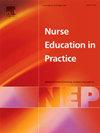Routines mediate educational solutions in clinical practice: A discussion paper on design-based research
IF 3.3
3区 医学
Q1 NURSING
引用次数: 0
Abstract
Aim
This study aimed to explore the appropriateness of using a design-based research approach in inducing change by exploring the research question: How can implementing new learning tools in hospital practice lead to sustainable change?
Background
Although design-based research is conducted with the idea of bridging the theory/practice gap, we perceived a gap between design, enactment and sustainable change. We assume that context—particularly routines—plays a decisive role in this gap.
Design
Qualitative design-based educational research
Methods
Discussion of the design-based research approach based on a case study. The results of the case study are interpreted with a theoretical explanatory model.
Results
We explored theories about practice, routines and routine dynamics. The identified elements of routine dynamics could be related to our context, findings and experiences. From the case data, an eye-opening insight emerged. Context, especially the prevailing routines and new routines to be developed in this context, are significant constituents in all phases of design-based research. Furthermore, elements of routine dynamics can explain the variance in enactment and the difficulties involved in establishing a new educational routine in nursing clinical practice.
Conclusion
The inclusion of routine dynamics in the DBR research protocol is a necessary addition to ensure the successful design and implementation of a new educational tool in clinical practice.
求助全文
约1分钟内获得全文
求助全文
来源期刊

Nurse Education in Practice
NURSING-
CiteScore
5.40
自引率
9.40%
发文量
180
审稿时长
51 days
期刊介绍:
Nurse Education in Practice enables lecturers and practitioners to both share and disseminate evidence that demonstrates the actual practice of education as it is experienced in the realities of their respective work environments. It is supportive of new authors and will be at the forefront in publishing individual and collaborative papers that demonstrate the link between education and practice.
 求助内容:
求助内容: 应助结果提醒方式:
应助结果提醒方式:


